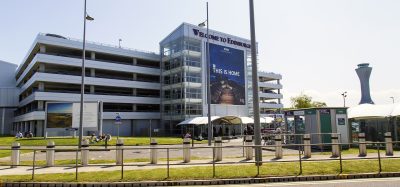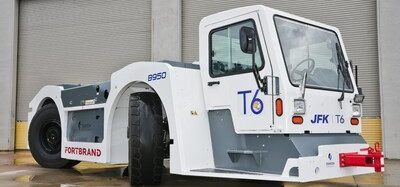Reliability and efficiency: setting the scene
Posted: 16 June 2006 | Dr Chris J. Smith, Managing Director, SH&E Limited | No comments yet
Question: How can an inherently simple activity of moving a suitcase from one place to another be so complex? Answer: When it takes place at an airport.
Question: How can an inherently simple activity of moving a suitcase from one place to another be so complex? Answer: When it takes place at an airport.
The task of taking a bag from a passenger at check-in and delivering it to the correct aircraft is not without its challenges and most air passengers will, at one time or another, have discovered that it does not always work properly. However, that is not the subject of this article, nor is it the source of the complexity asserted above. Rather, this article looks at the institutional and organisational complexity that arises in the provision of ground handling services at airports.
Ground handling covers far more, of course, than the handling of baggage; this is only one of many aspects of passenger handling, ramp handling, cargo handling, and fuel and oil handling. With such a diversity of operations, it is small wonder that at most airports there is a myriad of specialist suppliers of particular categories of services to airlines and other aircraft operators. Airport operators have a very significant interest in these activities because of their overall responsibility for safety and security, as well as their commercial interest in creating an environment in which airlines are able to offer efficient and low cost services that encourage growth.
Join us live: Shaping the Next Generation of Hold Baggage and Air Cargo Screening
Join us live for an insightful webinar on 11th December at 14:00 GMT, in collaboration with Smiths Detection, as we explore the strategic balance of operational efficiency, regulatory compliance, and sustainability in high-volume security environments.
This session offers a focused look into future-proofing your security strategy.
Key learning points
- Cost Reduction: Strategies to minimize bag travel time while simultaneously reducing operational costs.
- Regulatory Roadmap: Insights into the next wave of regulatory changes and their impact on future investment decisions.
- Sustainable Systems: Practical approaches to building sustainability into security systems and lowering the total cost of ownership (TCO).
- Scalable Solutions: Real-world examples of scalable systems supporting current airport growth and preparing for tomorrow.
Register now for expert insights, case studies, and actionable strategies on operational efficiency!
The nature of the organisations providing these services is also very varied. Independent ground handlers range from local, single station firms to major multi-nationals operating in several continents. It is also common for airlines to carry out handling activities, especially at their major bases and/or in passenger-contact functions, both for themselves and other airlines. Sometimes, airport operators themselves are also service providers, particularly at smaller airports, although it has also been the norm in some countries for larger airports as well.
The liberalisation of air transport within the European Union during the 1990s included a Directive in 1996 on ground handling. This was intended to ensure that airlines operating in the EU had access to reasonably priced and acceptable quality ground handling services, to complement the efforts that the airlines themselves were being encouraged through competition to offer to passengers and shippers. The ideal was to allow any party that was financially fit, technically competent and otherwise reputable to be able to offer services at airports above a certain traffic volume. However, the Directive recognised that at some airports there might be physical constraints that delayed or prevented a complete opening of certain categories of the ground handling market. Therefore, the Directive allowed the number of service providers to be restricted, with parties being selected through competitive tender. And that’s when things started to get complex!
In truth, the Directive may not have always been the cause of the complexity, but it certainly acted as an agent that discovered and revealed some underlying problems. SH&E was appointed by the European Commission in 2002 to investigate the functioning of the Directive and to determine the factual position in relation to ground handling in the then 15 Member States. The report (www.sh-e.com) sets out the many issues that were identified and was well received by all sectors of the stakeholder community, although (or perhaps because) we were asked to stop short of recommending any modifications that might be made to the Directive. In the remainder of this article, we discuss just four areas of concern where improvement might be possible.
The tender process
One of the primary difficulties of a competitive tender procedure to select the one or two ground handlers to be given access to one of the restricted service categories – let us say ramp handling – is to decide relevant and objective criteria against which the bidders should be judged. The tender process is normally conducted by the airport operator, unless it is also a provider of ground handling services, in which case responsibility passes to the Member State. But it is not the airport operator that might subsequently be contracting the new handling agents to turn around its aircraft. Therefore, the airline community, through a forum known within the EU as the Airport Users Committee (AUC), should be consulted during the selection process, but consultation carries with it neither authority nor responsibility.
When airlines subsequently come to contracting ramp handling services, their appointment criteria are likely to be the acceptance by the handler of the airline’s performance and quality standards, a technical assessment of whether the handler is indeed capable of meeting those standards and the price of the offer. The price of the offer may be judged on either an individual station or a wider network or alliance basis. These are very much the real world criteria.
However, adoption of these same criteria by the airport operator when appointing a handler to provide a restricted service is not possible.Yes, it could make an assessment of the technical competence or otherwise of each handler to provide a certain standard of service, but each airline will have different standards of service, so against which level should the airport operator make its assessment? Furthermore, for the airlines, the service capability of the handler is a pass/fail test, making price the tie-break more often than not, and a price criterion is not available for an airport operator. For airlines, the cheapest price wins, while airports would need to judge against the highest concession (or access) fee offered, which would not be very satisfactory for the ultimate payers, the airlines (on behalf of the passengers), and indeed would be contrary to the aims of the Directive. In theory, ground handlers could provide their services free to airlines and seek payment from the airport operator, so giving the airport a price criterion, but that would give rise to so many other problems as to be unworthy of further consideration here! It has generally been the case that airport operators, despite striving hard to find good criteria, often have to apply relatively weak, not terribly relevant or fairly subjective criteria in order to make their selections.
An alternative approach though, might be to enlist the more active participation of the airline community and essentially pass the selection process through to the eventual purchasers of the ground handlers’ services. The airport operator then effectively ‘rubber stamps’ the decision of the AUC, after checking/confirming the financial fitness and probity of the nominated handler. This process could take place when the major airline at the airport wishes to re-contract its handling services. Interested parties would submit tenders to the airline, which would then determine its desired service provider. The airport operator would then approve this company and award one of the restricted licences, thereby allowing the new handler to provide services to other airlines at the airport if other parties so wished.
A variation to this would be to organise a series of mini-tenders for several smaller airlines serving the airport, for each to select a desired handler. These airlines would then come together (with others) in the AUC and assuming an appropriate voting structure, a single preferred supplier could be determined. A disadvantage for the handlers would be the work load involved in preparing several tenders at the same airport and in pricing their offers, as there could be a clear link between the prices which could be offered and the number and identity of contracts the handler assumed it would win. If these not insubstantial difficulties could be overcome, one upside of the process would be that an incoming ground handler would be able to arrive at a new airport with signed contracts already agreed.
Establishing an equipment pool
One of the disadvantages of having several ramp handlers at an airport is the impact on the volume of Ground Service Equipment (GSE) needed. For a given flight schedule for a forthcoming season, it is possible to calculate the amount of GSE needed, making allowance for any spare capacity to cover mechanical failure and schedule disruption. The amount of GSE is smaller if there were only one handler than if there were multiple handlers.
The primary reason is that the peaks for GSE requirement during the week will be at different times for each handler, so that while one handler is using all its GSE, others will have idle GSE.
A secondary consideration is that in forward planning each handler will tend to over-estimate the share of the market it will capture and consequently acquire more GSE than it ends up needing.
This additional GSE equipment requires more storage space, can create additional vehicular traffic on the apron and also is an additional burden on the financial position of the ground handlers. The requirement to finance GSE might also act as a barrier to entry for new handlers, although we did not identify this as an issue during our work for the Commission.
A possible way of reducing these problems would be to establish a shared pool of GSE. This is not a new idea, but has previously been dismissed on the basis of the practicalities of sharing, damage to/lack of care of the GSE and the possibility of fist fights of the ramp as handlers try to take possession of GSE for their incoming flight. However, these problems are avoided if the pool were based on a medium term leasing concept, rather than a real-time sharing. Under the leasing concept, the airport operator might organise and finance the pool in cooperation with the handlers. Assessments of the GSE requirements for a forthcoming season would be made and the equipment obtained. Each handler would then agree to hire the GSE it needed for the contracts that it held. It would be responsible for the care and maintenance of the GSE.At the end of the contract/season, the GSE would be returned to the pool for use by other/replacement ground service providers.
Setting a minimum wage
A major problem facing ground handling organisations is that increased competition is placing severe pressure on all costs. As labour costs constitute a significant proportion of a handler’s cost – a survey we conducted in 2005 suggested it was on average 66 per cent of total operating costs – the pressure is at its most extreme here. In many locations, the pressure is driving wage levels below what could be earned in the local McDonalds. As a consequence, recruitment and retention of staff can be a major problem and there is a risk that handling, particularly ramp handling, is undertaken by unsuitable staff, thereby jeopardising airside safety and security (as well as service standards).
To avoid these problems and the obvious social implications of low wages, it would be possible for airport operators not themselves involved in ground handling, to require those tendering for ground handling licences to guarantee a minimum wage level and associated terms and conditions to their employees. The treatment of part-time and seasonal workers would need to be considered, as well as whether minima needed to be specified for different grades of staff and types of work. Another difficult area would be the issue of ‘split shifts’, in which workers for example handle the morning peak, return home and then go back to the airport for the evening peak, thereby completing eight hours work but in two parts.
The major disadvantage of this approach would be that the airport operator would be interfering in the affairs of other companies, to an extent that some might consider excessive.
Disposal of airport-owned handling companies
One of the major concerns of independent handlers was and is the involvement of airport operators in the provision of ground handling activities. This is a normal practice in some countries including Germany and Austria. Indeed, until the Directive, airport operators in these countries tended to have a monopoly of ramp handling activities and there are still some legal obligations on airports to be able to provide handling services for dealing, for example, with hijacked aircraft. During our work for the Commission, the actual problems that we identified were limited and allegations were not easy to substantiate, but there exists a perceived conflict of interest. Certainly, the involvement of the airport operator in ground handling greatly complicates relationships, as illustrated.
It is clear that the Commission has no interest in requiring airport operators to withdraw from handling activities and nor is it something that we are advocating. However, given the relatively poor financial performance of ground handling activities, it is quite feasible that airport operators decide to voluntarily withdraw from this market. Withdrawal would most normally be done by selling their ground handling company, but therein lies a problem for airports at which there are restricted numbers of handlers. At such airports, the Directive gives an airport operator an automatic right to handle, whereas other operators need to go through the competitive tender process. However, as soon as an airport’s ground handling operation is sold, it no longer enjoys an automatic right to operate. The solution should be a relatively simple one: a change to the Directive to allow a new owner to continue operations for a specified period (probably five or seven years) before having to go through competitive tendering.
Join our free webinar: Beyond silos: How ecosystem thinking elevates the airport experience
In today’s complex aviation landscape, airports are moving beyond siloed operations to embrace a new era of collaboration. This webinar focuses on how leading airports are using ecosystem thinking to adapt, personalize, and continuously improve every touchpoint, boosting both passenger satisfaction and non-aeronautical revenue.
Date: 13 Nov | Time: 10:00 GMT
REGISTER NOW TO SECURE YOUR SPOT
Can’t attend live? No worries – register to receive the recording post-event.

















